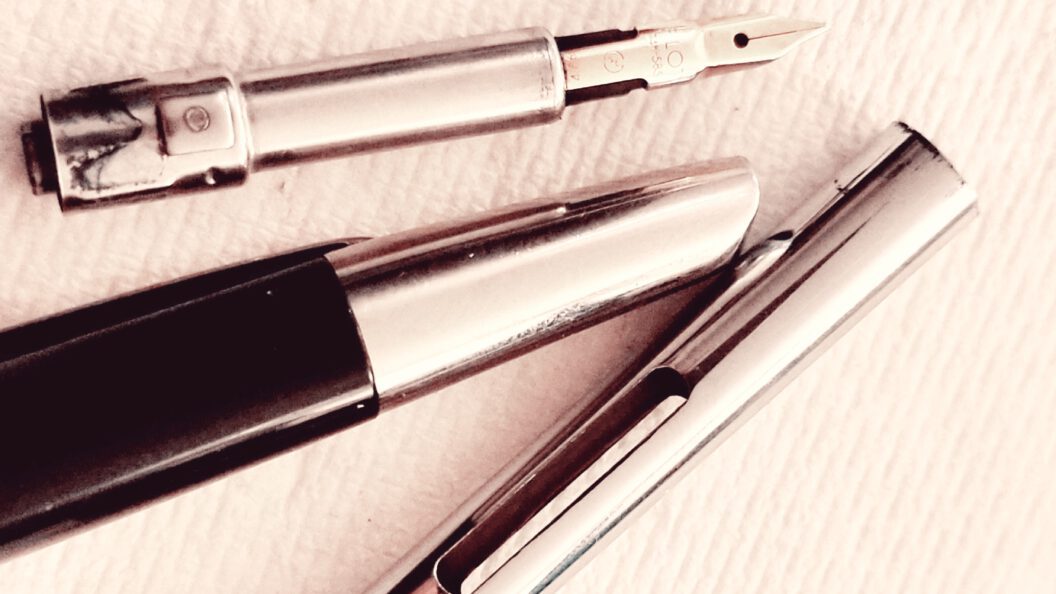TL;DR: Here, side by side, are two Pilot Capless pens, made fifty years apart (1966 and 2016).
The Pilot Capless is one of the iconic fountain pens. The Capless has sleek, innovative design: push-button (knock-on) mechanism to reveal or hide the nib, mobile hatch to prevent drying yet allow the need to appear when actuated, large clip so the grip and nib stay upward in the pocket.
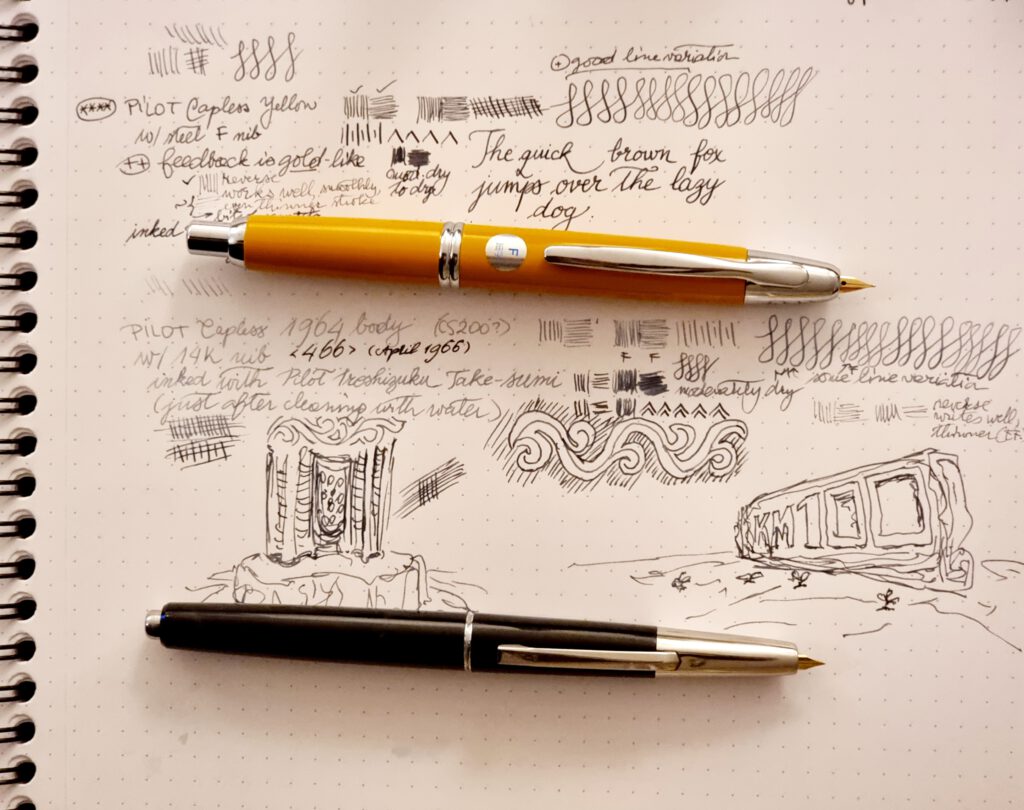
What’s in a name? Capless or Vanishing Point? Both: The brand name appears to have changed in 1973 from Capless to Vanishing Point [CR], but today it is common for the same product to be sold as Capless in Japan and Europe, and as Vanishing Point or simply VP in the US of A.
The Capless line includes two close relatives, the Decimo, which is a sleeker, narrower version of the Capless started in 2005 [CR], and the Fermo, which uses a twist button instead of the clicker used in the main line of Capless. The Fermo started in 2006, but the earliest version appears to have been made already by 1965, as [FPOJ, p. 230] explains and an advertisement for the US market illustrates [FPOJ, p. 233].
More naming issues: the Capless line was originally made by the Pilot Corporation. In the US, since 1994, the Vanishing Point line was sold as part of the Namiki brand of high(er) quality writing instruments [CR]. Since 1999, the Namiki brand applies for Capless pens only for the most ornate (and expensive) variants, such as the Raden made with abalone-shell inlays [CR].
Historical background: The invention of the high volume, low-cost ballpoint by Société Bic, as a manufacturing refinement of ballpoint pens, made writing possible on the move, when quick-draw notes were needed or where the writing instrument could take hard knocks. Fountain pens of the time were relatively expensive and, crucially, difficult to use when on the road. Pilot introduced in the early 1960s the Capless, to provide the quality writing of fountain pens, with the robustness and convenient access of click-in ballpoint pens that was needed for note-taking while on the move. In a PR stunt, Pilot advertised their new Capless as the pen to take notes and record official results during the Tokyo 1964 Olympic Games [FPOJ, p. 230].
There is some debate about the introduction of the Pilot Capless to the market, with FPOJ mentioning 1964 [FPOJ, p. 230] and Carmen Rivera [CR] mentioning “early 1960s”. Because Carmen Rivera sold Capless pens made in 1963, and the enumeration of models in [CR] starts the same year, it seems 1963 is the launch year.
Which models appear here? The 1966 pen, identified by the date “466” (April 1966) on the nib, was released in October 1964 (cf. [CR], “chrome plated and plastic“). It seems to be model C200SW [FPOJ, p. 230], with push button with double-click retractable mechanism, chrome-plated parts and plastic (styren) body, star mark on the chrome grip, double cartridge system with metal liner so parts won’t get misaligned inside, second-generation butterfly mechanism so the nib-tip does not touch the hatch, 14k-gold nib with “PILOT” and JIS imprimatur, and plastic- and chrome-made push button.
The 2016 model is much more easily identified. It is a Pilot Capless Deep Yellow with rhodium plating and a “special alloy” (steel) nib. The model number is FCN-1MR-DY-F, where DY indicates Deep Yellow, and the last F indicates a fine-sized nib.
What’s the worth of these pens in their economic context? The 1960s model was the ¥2,000 line, a relatively cheaper line whereas the gold-plated line cost ¥3,000. (This was not a cheap pen. Together with Sailor, Pilot was a luxury, first-tier pen maker. Other Pilot pens of the time with 14k-gold nibs cost as low as ¥1,000 and steel-nibbed pens could cost ¥600. Lesser pen-makers sold their pens even cheaper.) Inflation-wise, the ¥2,000 or 1964 are worth ¥8,984 today (cf. inflationtool.com), or about €64 (cf. Google currency exchange tool). In terms of salaries, ¥2,000 in 1964 were about 0.00487% of the average yearly salary of ¥410,400, dropping due to inflation to 0.00408% of the 1966 salary of ¥490,400. For a bit more detailed financial analysis, we need to consider the wide imbalances in Japanese wages, see [HH61], which can be much hugher than in Western economies and varies by type of work, age, gender, company size, and duration of employment with the same company (‘longer service, higher wage’). In 1960, a starting male engineer in a large company earned yearly ¥400,992, or ¥1,100 per diem, vs. ¥433 per diem for a female worker employed in manufacturing [HH61]. After 20 years with the same company, the engineer would earn 50% more, at about ¥1,650 per diem in 1960 and ¥2,200 per diem in 1966. In other words, a Pilot Capless a day at 45 years of age for an engineer. (Good thing there were only six colors of this particular model, and less than 20 models and colors altogether in the Capless line.)
The 2010s model is priced at about €64 in today’s money, but getting it to Europe adds shop fees, import fees, and shipping. Via Amazon.com, this model costs $77.42, $9.81 (slow) shipping to the Netherlands, plus taxes (typically, 33% plus a package-opening fixed cost of €15); the total cost reaches €123 (€81.29 x 1.33 + €15). Bought from Pensachi in Japan, this model costs $115, plus shipping ($24.99), plus import taxes (21%), plus a possible package-opening fee (€5); the total reaches beyond €150. On J-subculture, the cost is ¥7,797 (€56.30), plus import tax (21%), plus shipping (¥3,150 or €22.41 for slow shipping), plus extras (typically, €5); the total reaches about €95. In the Netherlands, 24papershop sells the Dark Yellow pen with 18k-gold nib for €220, with 21% VAT and shipping included, PW Akkerman Den Haag sells the same at €229, and PW Akkerman Amsterdam sells the same at €237.
Unpacked (Figures 2a and 2b): Both pens include a sleek mechanism, actuated with a push button (knock on, Knock-shiki), to reveal or hide the nib. Inside the grip part, a hatch and ‘butterfly’ mechanism can be actuated to allow the nib to go through without damaging the tip then cover hermetically the pen when the nib is retracted (as in the patent No. S39-34536, the second on hatch mechanisms patented by the Pilot Corporation [FPOJ, p. 231]).
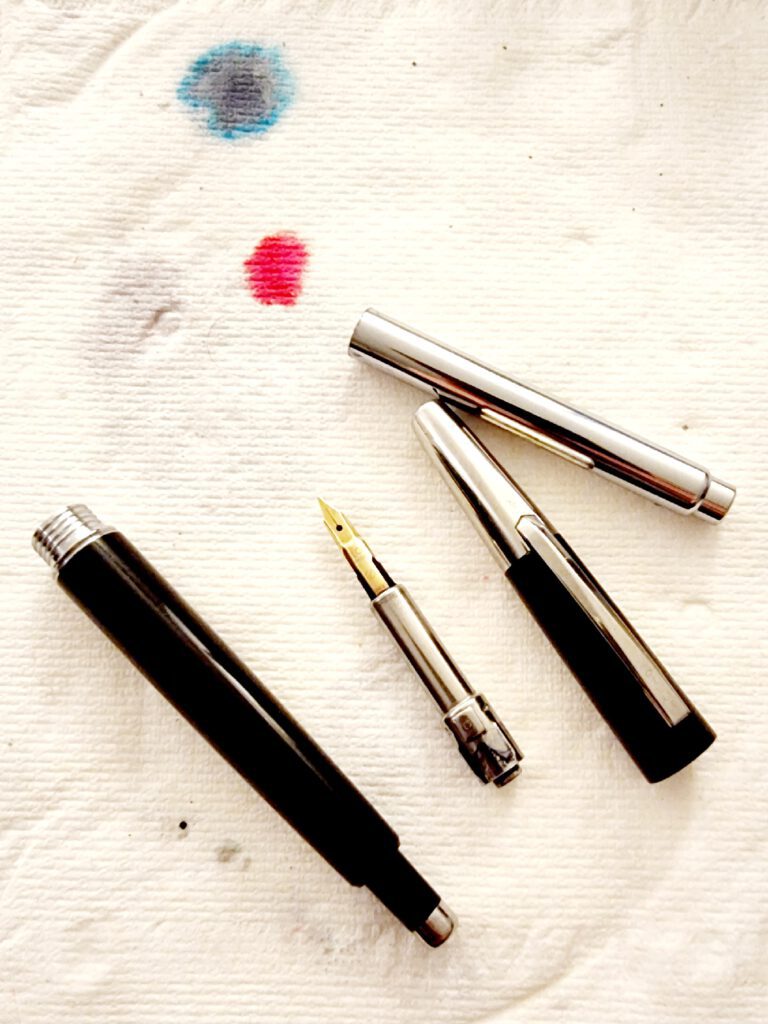

Nibs (zoom-ins in Figures 3a, 3b, and 3c): The nibs are smooth with slight feedback, giving excellent control on paper. The nibs offer some line variation, giving a fine stroke under normal pressure up to a medium stroke with some pressure. Both nibs have good spring, recovering quickly after pressure is relieved. Surprisingly, there is little to separate the gold from the steel nib in terms of feedback or flexibility.
Both nibs are moderately dry, leaving crisp markings that dry almost instantaneously after writing with the Pilot Iroshizuku Take-Sumi black ink. This makes them excellent writers and apt for detailed work on drawings.
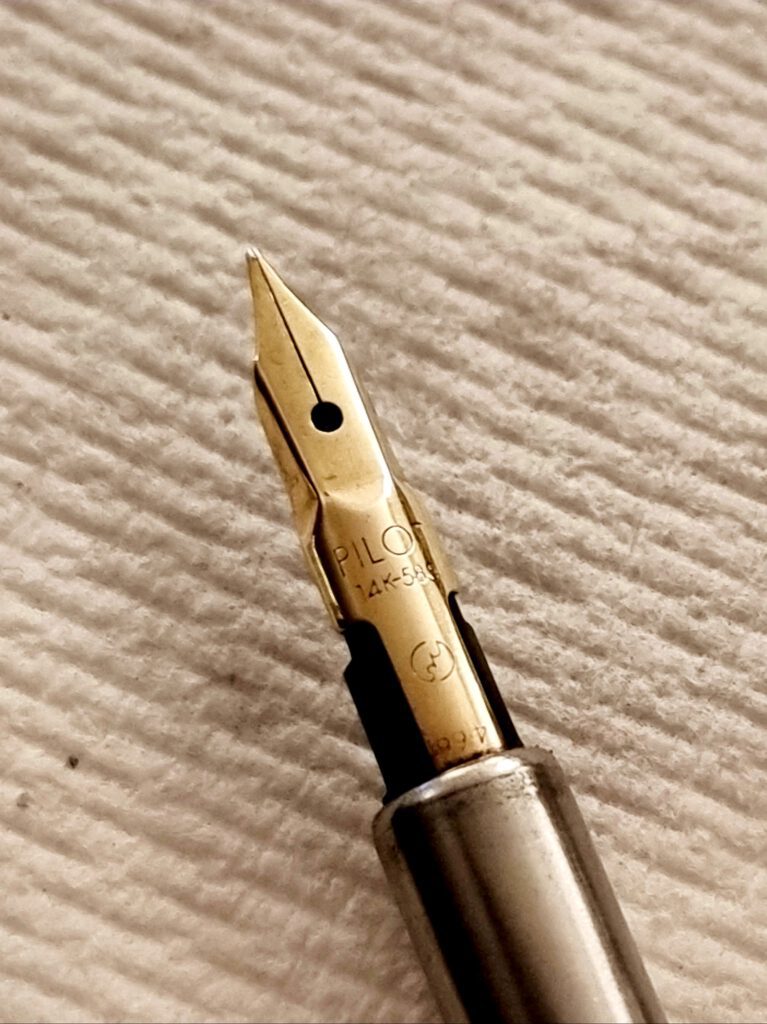
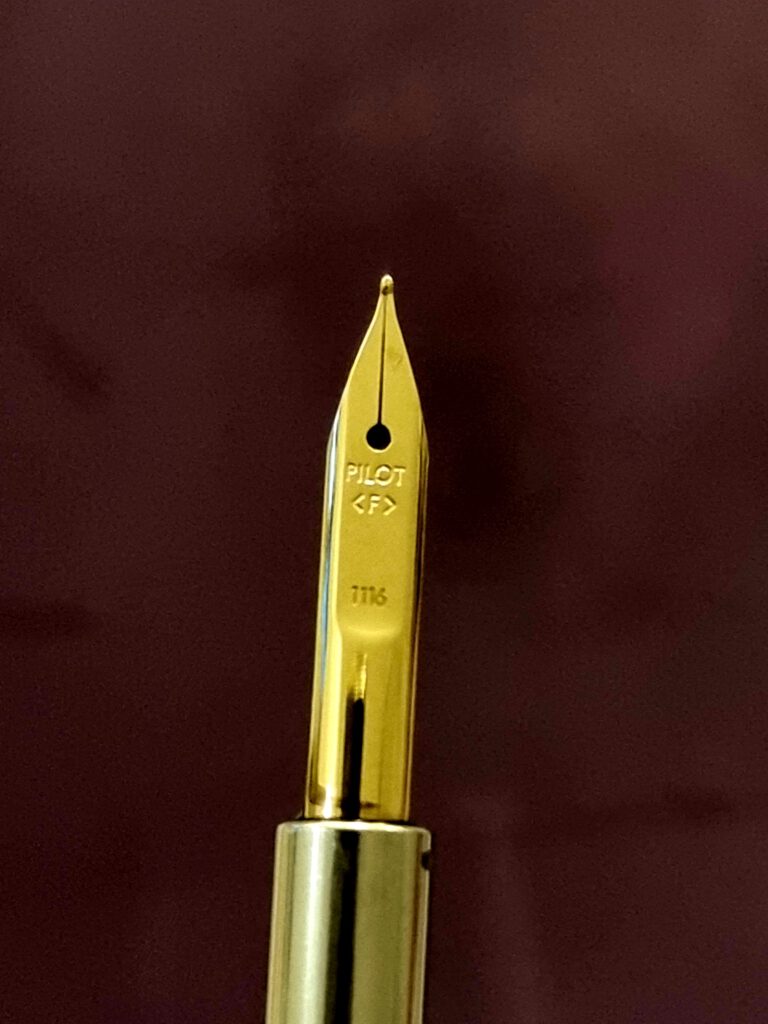

Grip, rings, and others (Figures 4a-4e): Both pens offer that unique Capless feature of a chromed grip with clip in-between. This feature can be an issue for some, because it may prevent fingers from joining in the normal oen grip. The clip of the 1960s model is further back and thus is less disturbing of the normal pen grip.
The grip itself is rounder and thicker for the 2010s model, but this did not affect how I wrote with these pens.
The push-button mechanism gives strong feedback for the 1960s model, whereas it barely registers for the 2010s model. For the 1960s model, there is a distinct moment when the mechanism of the hatch engages, which vibrates the entire pen before stabilizing. For the 2010s model, thw feedback is that of a spring engaging, with much less vibration than for the 1960s model.
The nib seems to protrude much more for the 2010s model, in comparison to the 1969s model; this does not seem to impact the flexibility, spring, or wetness of the nib.
Similarly, the mid-rings — one on each part of the body that separates by unscrewing — are extruded more for the 2010s model than for the 1960s model.
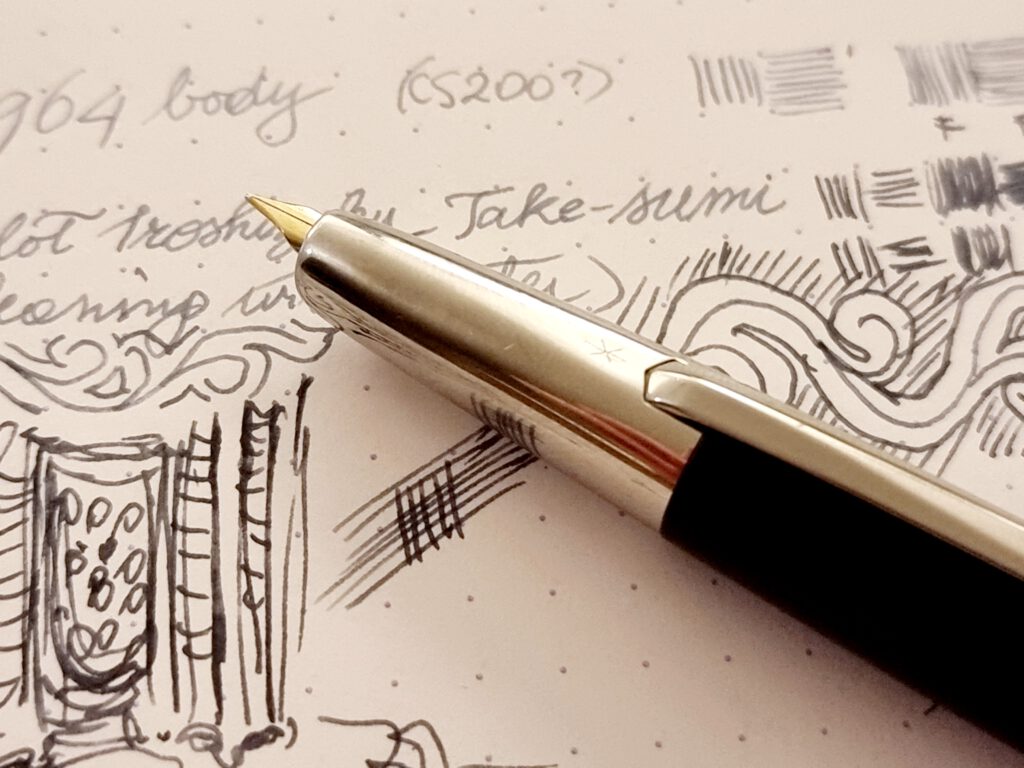
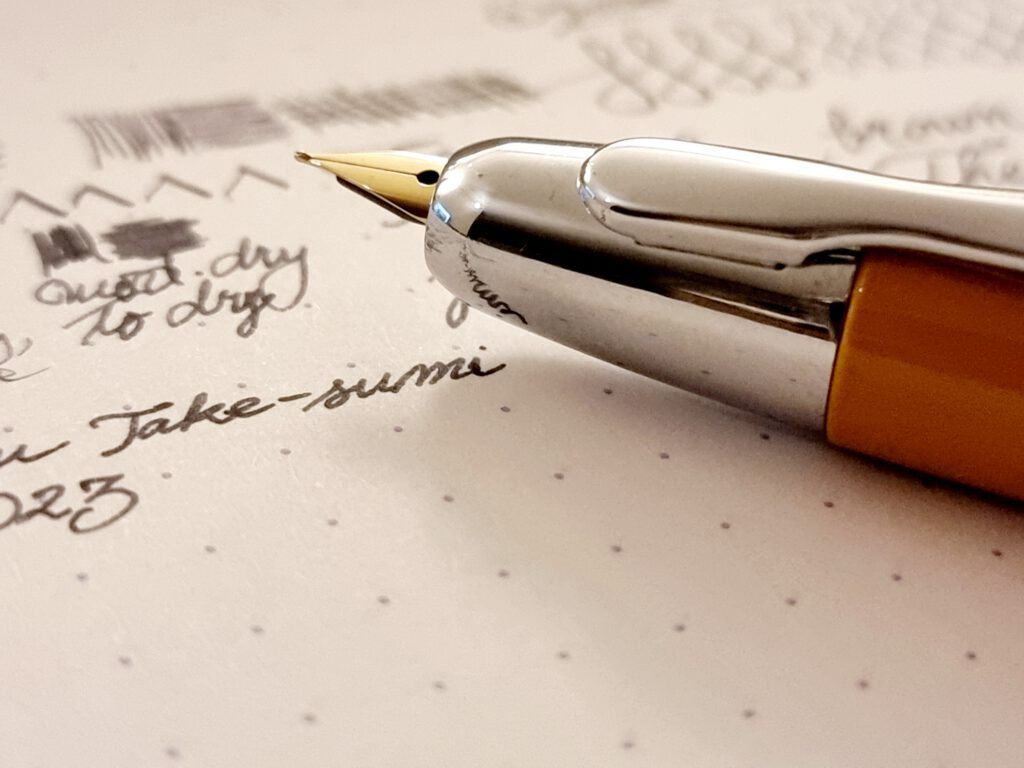
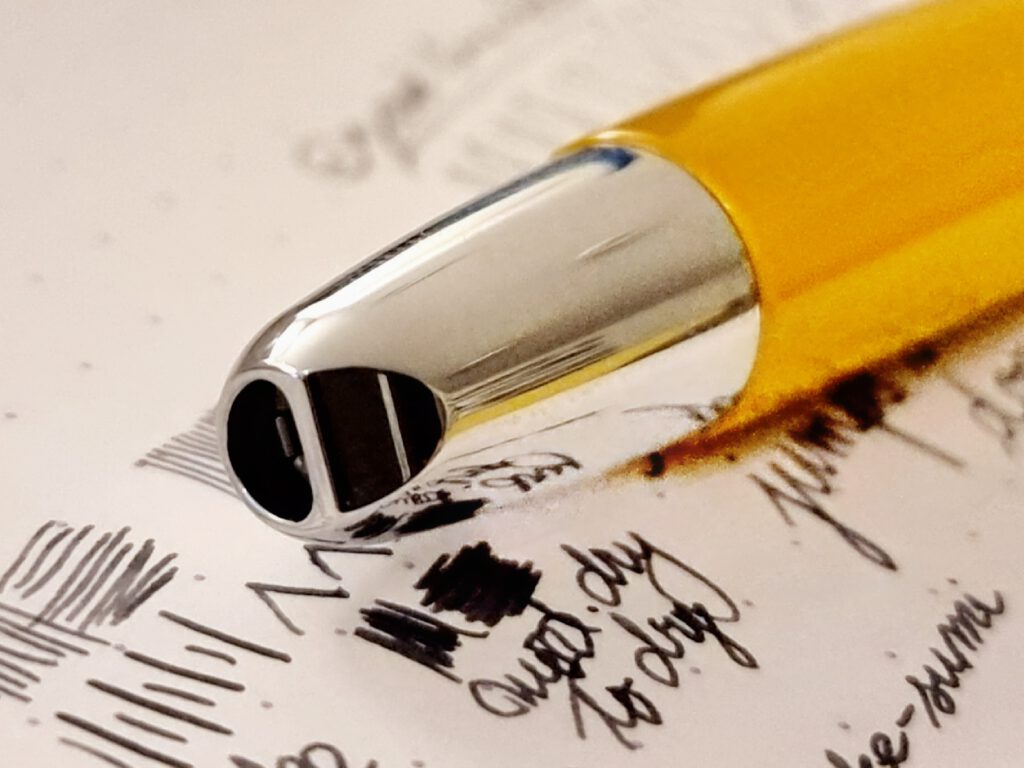

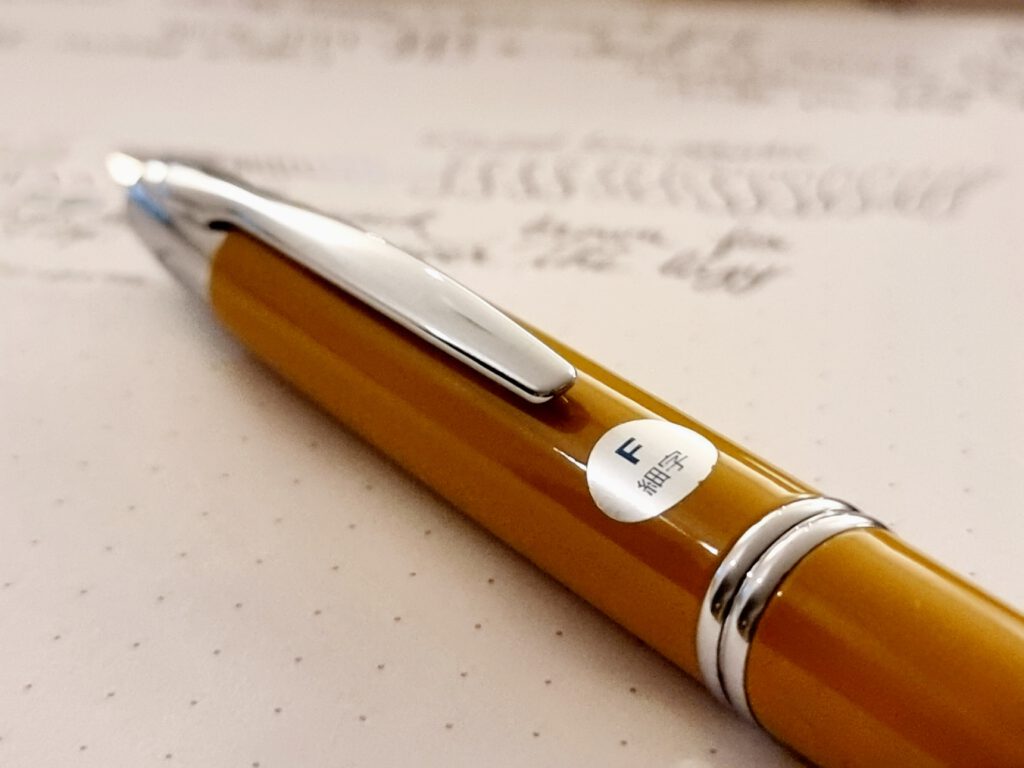
Drawing and writing sample (Figures 5a and 5b): The ergonomics of writing and drawing with the Capless are excellent. Both pens write and draw smoothly, with just that bit of feedback that gives a feeling of control. They are both responsive pens that fit well in my hand.
Beyond the sample, using the Capless for extended periods of time can be tiring, because the grip can become slippery due to its coating and because the clip may impede a relaxed (normal) grip on the pen.
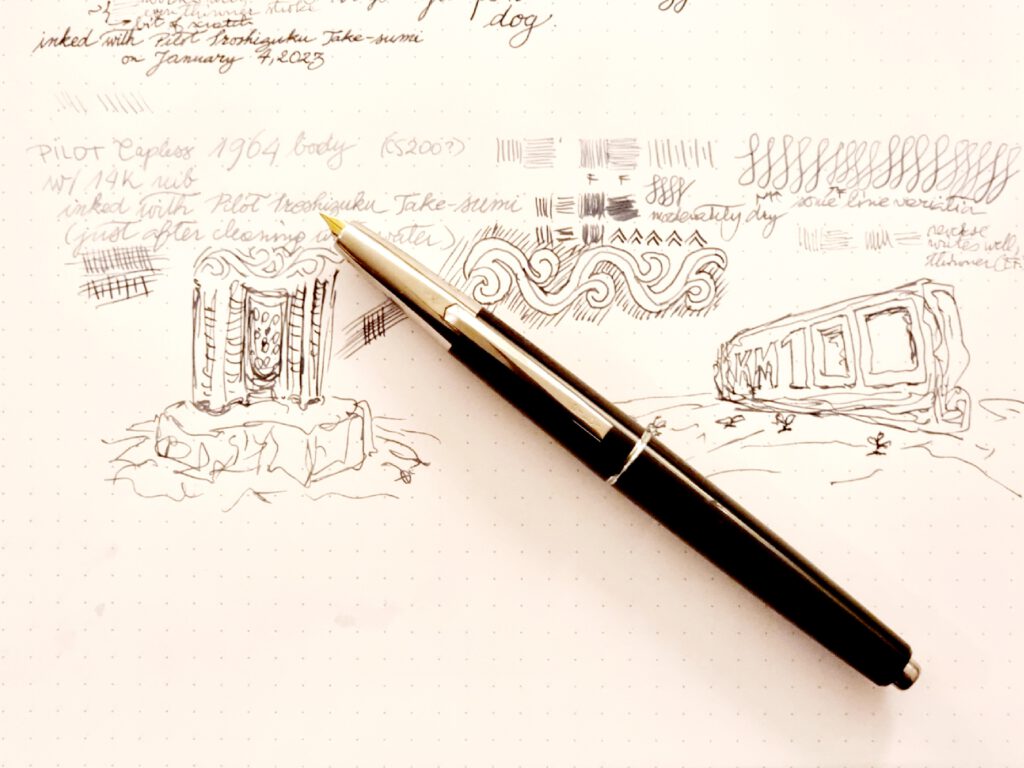
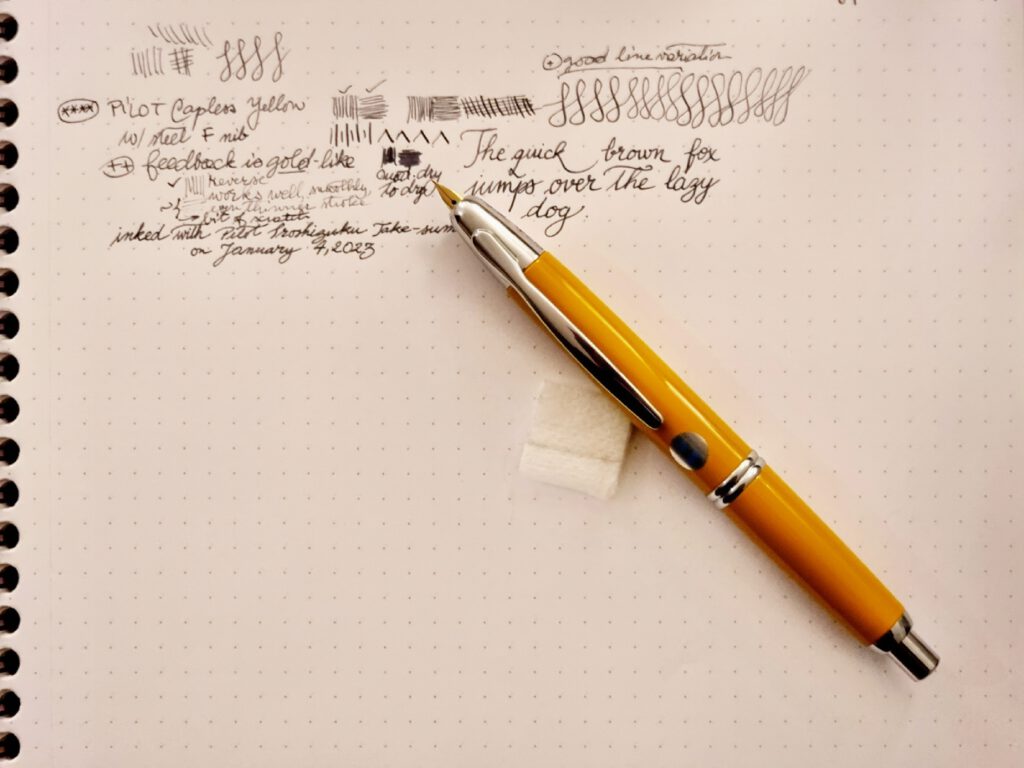
References
- Andreas Lambrou and Masamichi Sunami, Fountain Pens of Japan. 2012 edition. Published by Kaplan. Abbrev. FPOJ.
- Carmen Rivera, Pilot Vanishing Point Pen History, technical report, 2000-2009. Abbrev. CR. Online, available: http://carmenriverapens.com/Vanishing_Point_images/index.htm
- Rokuro Hotani and Takashi Hayashi, The Evolution of Wage Structure in Japan. ILR Review Oct., 1961 Vol. 15, No. 1 (Oct., 1961), pp. 52-66. Stable URL: https://www.jstor.org/stable/2519602 . Abbrev. HH61.

